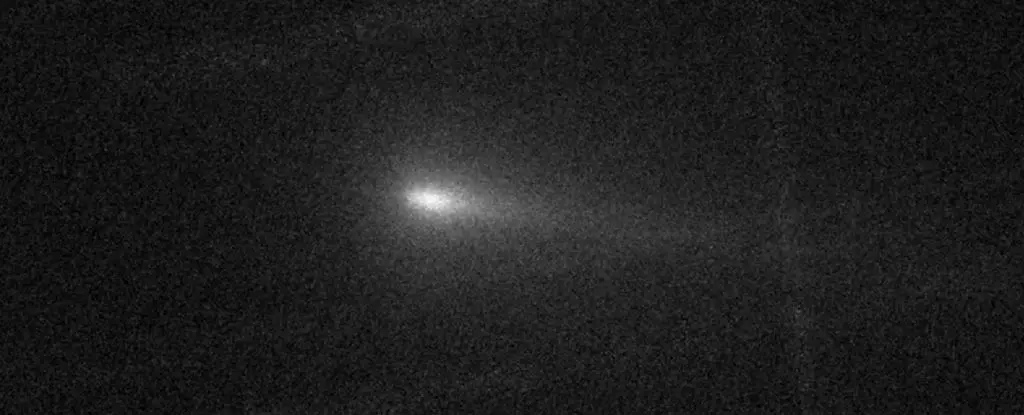The world of astronomy is often filled with excitement, particularly when a comet is discovered with the potential to light up our skies. Such was the case with Comet C/2024 S1, which was expected to dazzle stargazers during the Halloween season of 2024. As a Kreutz sungrazer comet, its approach towards the Sun promised an astronomical event of significance. Unfortunately, rather than capturing our attention with brilliance, C/2024 S1 seemingly faces a premature demise, unfolding a narrative of disintegration as it gets closer to our star. Observations over the month of October have documented a promising brightening followed by a rapid decline. The nucleus appears to be vanishing, leaving in its wake a trail of gas and dust that tells a story of cosmic fragility.
This celestial phenomenon prompts not only disappointment but evokes curiosity about the life cycle of comets, especially those categorized under the Kreutz group. Historically, these comets are fragments of a once larger body that shattered centuries or even millennia ago. A closer investigation into C/2024 S1 reveals a mix of scientific intrigue and a tinge of despair.
The behavior of Comet C/2024 S1 underscores the precarious existence of such astronomical entities. Its recent outburst, where significant amounts of dust and gas were ejected, hints at the instability plaguing its nucleus. This release results in a brief surge of brightness before inevitably fading—a common pattern for comets nearing the Sun. Scientists postulate that the icy composition of comets plays a crucial role in their lifecycle. Subjected to intense solar heat as they travel closer to the Sun, they enter a phase of accelerated sublimation: ice transforms directly into gas, subsequently leading to the potential fragmentation of the nucleus.
The situation mirrors the fate of Comet C/2019 Y4, which shattered into pieces during a similar close approach, witnessed by astronomers using the Hubble Space Telescope. In the case of C/2024 S1, the visible alterations—the fading nucleus and the burgeoning tail—indicate an imminent breakdown. Reports from amateur astronomers offer further evidence of this fragmentation, suggesting that the comet’s textures and shapes are ephemeral as they dance along their cosmic paths.
Should C/2024 S1 continue along this destructive trajectory, stargazers may witness a change in spectacle; rather than a bright, easily observable celestial companion, we could observe a long, wispy tail devoid of a prominent nucleus. Despite the forthcoming disintegration, there remains the potential for a shard of the comet’s nucleus to survive, continuing its journey toward perihelion—its closest approach to the Sun. If a fragment manages to endure, astronomers posit that that it could still impress onlookers, perhaps even appearing brighter than Venus on clear evenings.
It’s also fascinating to consider that this particular comet might trace its origins back to a significant historical event in 1106 CE—the Great Comet. The knowledge that today’s cosmic wanderer may be a remnant of that ancient spectacle adds an additional layer of wonder to the current scenario. The fragments from that long-ago collision continually swirl through our solar system, reminding us how interconnected our cosmic narratives truly are.
As we look ahead to the October 2024 predictions, the possibility of observing C/2024 S1 brings mixed emotions. Should it survive its perilous approach, its appearance could be striking against the backdrop of the Northern Hemisphere night sky post-perihelion. However, the likelihood of witnessing a comet devoid of a bright nucleus poses questions about our expectations and understanding of cosmic phenomena.
What remains most intriguing is the ongoing unpredictability inherent in comet behavior. As we stand on the threshold of witnessing cosmic history, the episode of C/2024 S1 serves as a reminder of nature’s power, including the fragility of newly observed celestial bodies. It challenges enthusiasts and scientists alike to observe, document, and appreciate the fleeting beauty of the universe, even when it doesn’t play out as we hope.
As we prepare for potential cometary visibility—whether through binoculars or telescopes—let us gather our equipment, take a deep breath, and embrace the unpredictability of the cosmos. Whether we see a dazzling comet traversing our skies or only remnants trailing behind it, the universe remains at once intimidating and magnificent. Happy hunting!


Leave a Reply